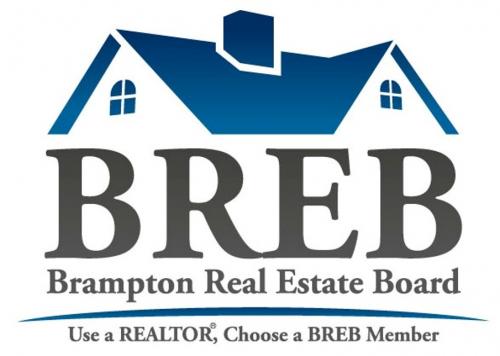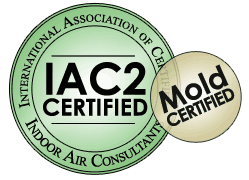|
|
Indoor Air quality in your House
Is Your Home Making you Ill ?
Do you need indoor air quality testing for your home?
Test the Air in your Home for Mold & Others Harmful Allergens
It’s simple, inexpensive and fast!
INDOOR AIR QUALITY -What are you breathing?
It is a good question to ask ourselves. All of us face a variety of risks to our health as we go about our day-to-day lives. Driving in cars, flying in planes, engaging in recreational activities, and being exposed to environmental pollutants all pose varying degrees of risk. Some risks are simply unavoidable. The good news is indoor air pollution is one risk that you can do something about.
In the last several years, a growing body of scientific evidence has indicated that the air within homes and other buildings can be more seriously polluted than the outdoor air in even the largest and most industrialized cities. Other research indicates that people spend approximately 90 percent of their time indoors. Thus, for many people, the risks to health may be greater due to exposure to air pollution indoors than outdoors
INDOOR AIR QUALITY ELEMENTS
Indoor pollution sources that release gases or particles into the air are the primary cause of indoor air quality problems in homes. Inadequate ventilation can increase indoor pollutant levels by not bringing in enough outdoor air to dilute emissions from indoor sources and by not carrying indoor air pollutants out of the home. High temperature and humidity levels can also increase concentrations of some pollutants as Mold.
AMOUNT OF VENTILATION
If too little outdoor air enters a home, pollutants can accumulate to levels that can pose health and comfort problem unless are built with special mechanical means of ventilation, homes that are designed and constructed to minimize the amount of outdoor air that can "leak" into and out of the home may have higher pollutant levels than other homes. However, because some weather conditions can drastically reduce the amount of outdoor air that enters a home, pollutants can build up even in homes that are normally considered "leaky. Outdoor air enters and leaves a house by: infiltration, natural ventilation, and mechanical ventilation. In a process known as infiltration, outdoor air flows into the house through openings, joints, and cracks in walls, floors, and ceilings, and around windows and doors. In natural ventilation, air moves through opened windows and doors. Air movement associated with infiltration and natural ventilation is caused by air temperature differences between indoors and outdoors and by wind. Finally, there are a number of mechanical ventilation devices, from outdoor-vented fans that intermittently remove air from a single room, such as bathrooms and kitchen, to air handling systems that use fans and duct work to continuously remove indoor air and distribute filtered and conditioned outdoor air to strategic points throughout the house. The rate at which outdoor air replaces indoor air is described as the air exchange rate. When there is little infiltration, natural ventilation, or mechanical ventilation, the air exchange rate is low ,pollutant levels an moisture can increase.
Get a quick glimpse of some of the most important ways to protect the air in your home by touring the Indoor Air Quality (IAQ) House. Room-by-room, you'll learn about the key pollutants and how to address them.
- Living Room
- Bathroom
- Bedroom
- Kictchen
- Basement
A living room is usually a well-used area of a home and may harbor indoor pollutants. It is important to ventilate properly, keep secondhand smoke outside of the house, and vacuum and dust regularly.
|
|
Pet Dander and Hair
Pets can trigger allergy and asthma attacks due to dander and hair. Keep them out of the sleeping areas, and away from upholstered furniture, carpets, and stuffed toys. Vacuum and clean carpets, rugs, and furniture often. Learn more
Secondhand Smoke
Secondhand smoke from cigarettes, cigars, and other tobacco products can trigger asthma and other respiratory illnesses especially in children. To help protect children from secondhand smoke, do not smoke or allow others to smoke inside your home or car. Learn more
Carbon Monoxide
Fireplaces and leaking chimneys are sources of carbon monoxide. Ventilate rooms that have fireplaces, make certain the flue damper is operational and fully open when in use, and ensure the chimney is properly sealed. Learn more
|
Top
A bathroom is often the dampest area of a home. It is important to ventilate a bathroom during use and dry damp surfaces.
|
|
Mold
Bathrooms are a common source of mold. Humidity from showers can cause moisture problems, which will lead to mold growth. Mold can cause allergic reactions, asthma, and other respiratory ailments. Installing and using a ventilation fan will help to control moisture and inhibit mold growth. Learn more
|
Top
A bedroom often contains materials that collect dust. It is important to clean bedding and other fabrics, and vacuum regularly.
|
|
Dust
Dust mites can trigger allergy and asthma attacks. Dust mites are everywhere especially on pillows, blankets, carpets, upholstered furniture, and stuffed toys Dust and vacuum your home regularly, wash bedding, and use allergen-proof mattress and pillow covers. Learn more
|
Top
A Kitchen has appliances that may leak gases, and often contain chemicals for cleaning or removing pests. It is important to properly maintain and ventilate appliances, and safely store chemicals.
|
|
Pesticides
Pesticides, used to rid homes of rodents, termites, insects, and other pests, can irritate the eyes, nose, and throat; damage the central nervous system and kidneys; and increase the risk of cancer. Don’t leave food out, and if you must use pesticides, ventilate during and after use and follow directions to limit exposure. Use non-chemical methods of pest control when possible. Learn more
Volatile Organic Compounds (VOCs)
Common household cleaners, often placed under the kitchen sink, release Volatile Organic Compounds (VOCs), when used and stored. Store household products that contain chemicals according to manufacturers’ instructions and keep all products away from children. Consider purchasing cleaners without VOCs. Learn more
Carbon Monoxide
To help prevent carbon monoxide exposure, make sure appliances such as gas stoves vent to the outside whenever possible and that all appliances are properly installed, used, and maintained. Learn more
|
Top
A basement is a source of air leaks and moisture, and often contains various chemicals. It is important to ventilate, seal cracks, and properly store all chemicals.
|
|
Carbon Monoxide
Combustion heating and cooling appliances such as heating, ventilation, and air conditioning units, gasoline-powered heaters, and other appliances are sources of carbon monoxide. Properly install, use, and maintain fuel-burning appliances. Install carbon monoxide detectors in living spaces. Learn more
Volatile Organic Compounds (VOCs)
Paints, resins, paint thinners, and chemicals, and other products, will still release Volatile Organic Compounds (VOCs) even while stored properly. Make sure there is plenty of ventilation when painting, remodeling, or using other products that may release VOCs. Consider purchasing low and no VOC products. Learn more
Mold
Basements can be damp. Install a properly sized dehumidifier to help keep your basement at an appropriate humidity level and reduce the potential for mold. It is important to dry water-damaged areas and items within 24-48 hours to prevent mold growth. Learn more
Radon
Radon, a naturally occurring radioactive gas, is the second leading cause of lung cancer among non-smokers in the U.S. It enters a home through cracks and openings in floors and walls in contact with the ground. Learn more
-
For Existing Homes: Test your home or have a professional test your home. If the test result indicates your radon level is too high, a qualified radon service professional can install a radon mitigation system.
-
For New Construction: Radon-resistant construction techniques help block radon from entering the home. A gas permeable layer, often a four-inch layer of clean gravel, beneath the home’s slab allows gas to move freely underneath the house. Plastic sheeting on top of the gas permeable layer and under the slab helps prevent gas from entering the home.
|
Top
Contact us today for a Mold inspector in Mississagua and Brampton!
Bringing Clean Air to Life ®
|
|














